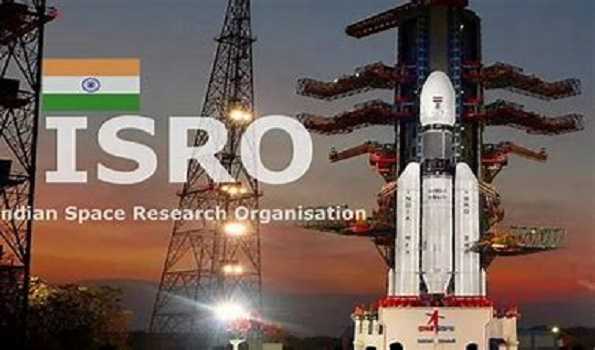Chandrayaan-3 spacecraft integrated with launch vehicle
- Sunday, July 4,2023
- 7 comments
Chennai, July 5 (UNIL) The Indian Space Research Organisation (ISRO)
on Wednesday announced that the Chandrayaan-3 spacecraft was integrated
with the Launch Vehicle Mark-III (LVM3).
The third lunar mission will take place later this month from the spaceport of
Sriharikota, where all arrangements for the mission are on in full swing.
The launch will take place from the Second Launch Pad at the SHAR Range.
In a tweet, ISRO said "Today, at Satish Dhawan Space Centre, Sriharikota,
the encapsulated assembly containing Chandrayaan-3 is mated with LVM3."
The launch window for Chandrayaan-3 is between July 12 and 19.
Chandrayaan-3 is a follow-on mission to Chandrayaan-2 to demonstrate
end-to-end capability in safe landing and roving on the lunar surface.
It consists of Lander and Rover configuration. The propulsion module
will carry the lander and rover configuration till 100 km lunar orbit. The
propulsion module has Spectro-polarimetry of Habitable Planet Earth
(SHAPE) payload to study the spectral and Polari metric measurements
of Earth from the lunar orbit.
The Lander payloads are Chandra’s Surface Thermophysical Experiment
(ChaSTE) to measure the thermal conductivity and temperature; Instrument
for Lunar Seismic Activity (ILSA) for measuring the seismicity around the
landing site; Langmuir Probe (LP) to estimate the plasma density and its
variations.
A passive Laser Retroreflector Array from NASA is accommodated for lunar
laser ranging studies.
The Rover payloads are Alpha Particle X-ray Spectrometer (APXS) and
Laser Induced Breakdown Spectroscope (LIBS) for deriving the elemental
composition in the vicinity of landing site.
Chandrayaan-3 consists of an indigenous Lander module (LM), Propulsion
Module (PM) and a Rover with an objective of developing and demonstrating
new technologies required for Inter planetary missions.
The Lander will have the capability to soft land at a specified lunar site and
deploy the Rover which will carry out in-situ chemical analysis of the lunar
surface during the course of its mobility.
The Lander and the Rover have scientific payloads to carry out experiments
on the lunar surface. The main function of PM is to carry the LM from launch
vehicle injection till final lunar 100 km circular polar orbit and separate the LM
from PM.
Apart from this, the Propulsion Module also has one scientific payload as
a value addition which will be operated post separation of Lander Module.
ISRO sources said more fuel has been added to the lander, along with new
equipment, and also strengthened it. Chandrayaan-3 will be going in the same
path as its predecessor, and will also be landing at the same site.

